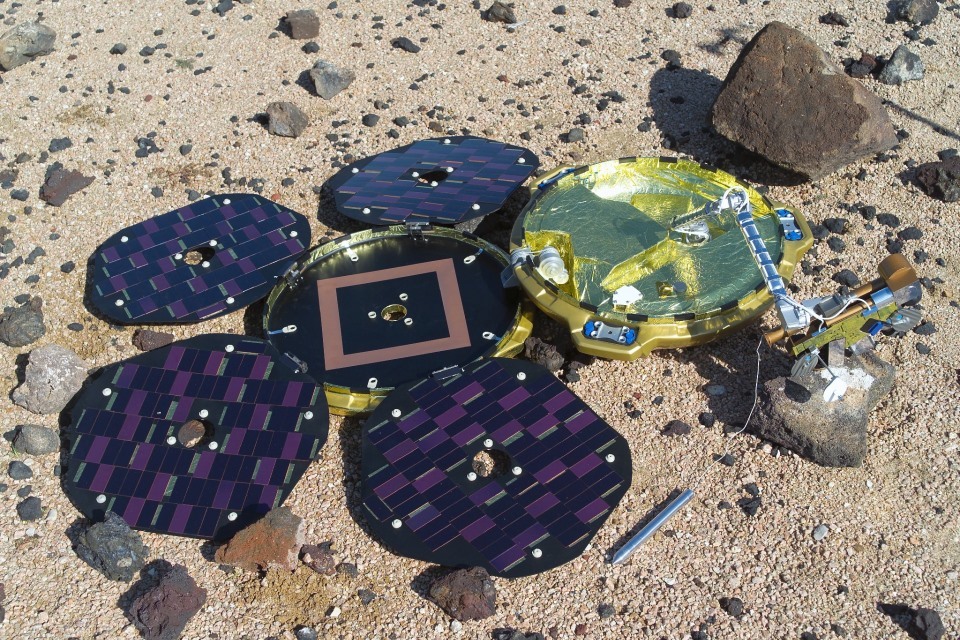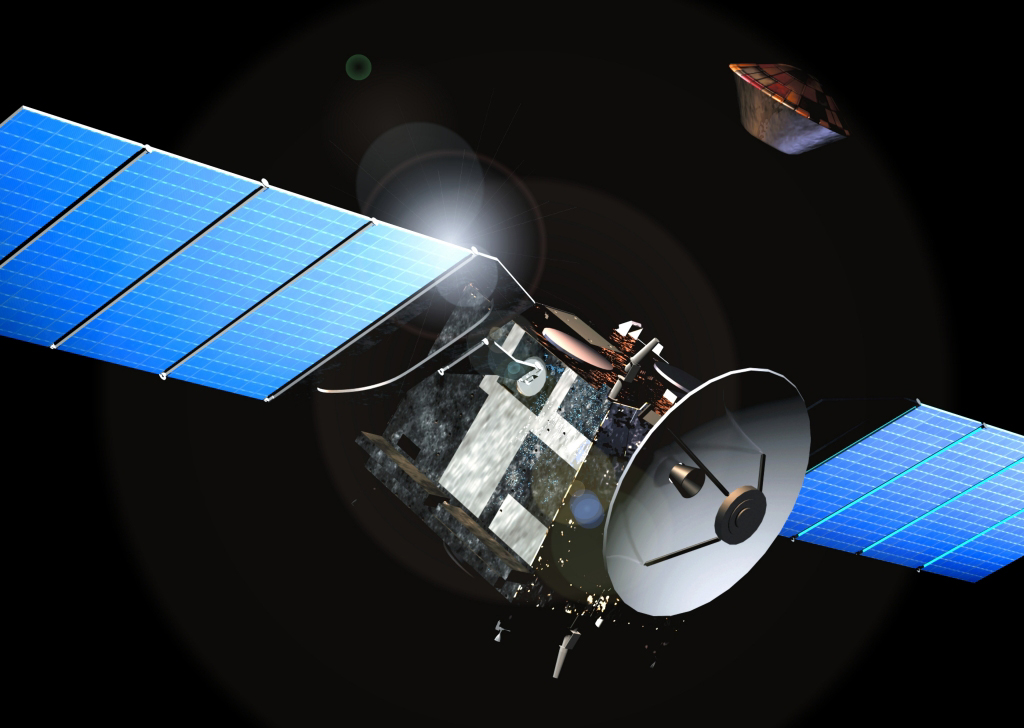For over a decade, the Beagle 2 lander was considered one of Mars exploration’s greatest mysteries. Launched as part of the European Space Agency’s Mars Express mission in 2003, the British-built spacecraft was supposed to make history as the first successful UK-led mission to the Red Planet. Instead, Beagle 2 vanished without a trace, leaving scientists puzzled.
It wasn’t until 2015, a full 11 years later, that NASA’s Mars Reconnaissance Orbiter (MRO) discovered the lander’s final resting place—intact on the Martian surface but partially deployed. This revelation turned what was once thought to be a total failure into a mission that almost succeeded.
At Spaceyv, we love exploring the forgotten and mysterious stories of space exploration. So, let’s dive deep into the fascinating story of Beagle 2—what went wrong, how it was found, and what it means for future Mars missions.
The Vision Behind Beagle 2
Beagle 2 was the brainchild of Professor Colin Pillinger, a visionary British scientist who dreamed of putting the UK at the forefront of Mars exploration. Unlike large NASA landers, Beagle 2 was small and lightweight, weighing just 33 kg (73 lbs).
🔹 Mission Goal: Search for signs of past or present life on Mars.
🔹 Landing Site: Isidis Planitia—a vast basin near the Martian equator, believed to have once contained water.
🔹 Scientific Instruments: Included a robotic arm, a rock grinder, and a “mole” for digging beneath the surface.
Rather than a NASA-style mission, Beagle 2 was a low-budget, highly ambitious project, largely funded by private donations and UK institutions. It launched on June 2, 2003, aboard the European Space Agency’s Mars Express spacecraft.
After traveling 400 million kilometers (250 million miles), Beagle 2 was supposed to land on Christmas Day, 2003. Scientists eagerly awaited its first signal. But that signal never came.

The Disappearance: What Went Wrong?
For years, Beagle 2 was assumed destroyed. Here’s why:
1. No Signal After Landing
-
The lander was programmed to send a radio signal back to Earth after touching down.
-
On December 25, 2003, mission control in the UK waited for confirmation.
-
Silence. No signal was ever received.
2. Theories Behind Its Failure
Without data from Beagle 2, scientists could only speculate what happened:
✔️ Crash Landing: Some believed Beagle 2 hit the surface too hard due to a failure in its parachutes or airbags.
✔️ Atmospheric Entry Issues: If its heat shield didn’t work properly, it might have burned up.
✔️ Software Malfunction: Some speculated that a glitch prevented it from deploying correctly.
For over a decade, Beagle 2 was considered lost forever—another unfortunate casualty in the history of Mars exploration.
The Discovery: Finding Beagle 2 After 11 Years
In 2015, NASA’s Mars Reconnaissance Orbiter (MRO), which had been orbiting Mars since 2006, was re-tasked to search for Beagle 2. Using its HiRISE camera, one of the most powerful imaging tools in space, NASA scanned the landing site.
And then—they found it.
What the Images Revealed
📍 Beagle 2 wasn’t destroyed—it was intact.
📍 The lander had partially deployed its solar panels but failed to fully open.
📍 One or more of the panels likely covered its radio antenna, preventing communication with Earth.
This meant Beagle 2 had actually landed safely but couldn’t send a signal due to an unexpected deployment issue.
What Beagle 2’s Discovery Means for Mars Exploration
The rediscovery of Beagle 2 in 2015 rewrote space history. Instead of being a total failure, it was a mission that almost succeeded. The new findings provided valuable lessons for future Mars landers, including:
✔️ The Importance of Redundancy: Future landers should have backup communication systems in case of deployment failures.
✔️ Advanced Imaging Techniques Work: NASA’s HiRISE camera proved that lost spacecraft can be found using modern technology.
✔️ Even “Failed” Missions Have Value: The Beagle 2 mission, despite its issues, demonstrated that low-cost planetary exploration is possible.
Professor Colin Pillinger, who passed away in 2014, never lived to see the rediscovery of Beagle 2. But his vision of British-led Mars exploration lives on, influencing new ESA and NASA missions.

Beagle 2’s Legacy and the Future of Mars Exploration
Although Beagle 2 never completed its mission, its story remains an inspiration for scientists and engineers. Since its rediscovery:
🚀 ESA launched the ExoMars mission in 2016, with more advanced landing technology.
🚀 NASA’s Perseverance rover landed on Mars in 2021, continuing the search for life.
🚀 Private space companies like SpaceX are pushing toward human missions to Mars.
Beagle 2 was a reminder that failure in space exploration is not the end—it’s part of the learning process. Who knows? The next “lost” mission may also be rediscovered in the future.
For more fascinating stories on Mars missions, UFOs, and space mysteries, check out Spaceyv.com! 🚀✨
References:
1️⃣ European Space Agency (ESA). “Beagle 2 Lander Found on Mars.” (2015)
2️⃣ NASA Mars Reconnaissance Orbiter (MRO) Team. “HiRISE Images Confirm Beagle 2’s Fate.”
3️⃣ Colin Pillinger & Beagle 2 Team. “The Beagle 2 Mission: A Scientific Overview.” (2004)
4️⃣ BBC Science. “What Really Happened to Beagle 2?”
5️⃣ National Geographic. “Beagle 2: The Mars Mission That Almost Succeeded.”
Final Thoughts
Beagle 2’s journey—from hope to disappearance to rediscovery—is a lesson in resilience and innovation. While it didn’t fully succeed, it paved the way for future Mars missions. At Spaceyv, we celebrate these stories because they remind us how far humanity has come in space exploration—and how much further we still have to go.
What do you think? Could future Mars missions finally succeed where Beagle 2 fell short? Drop your thoughts in the comments on Spaceyv.com! 🚀🔥



